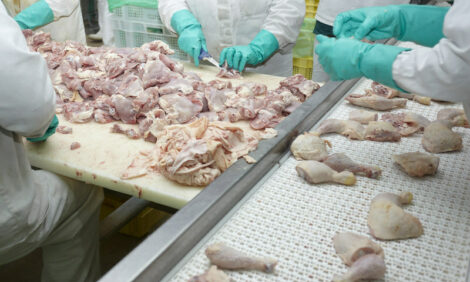



The effect of mycotoxins on swine fertility
Swine fertility has a significant effect on farm profitability. Along with other factors, the number of pigs produced per sow per year defines the production cost per pig.Different parameters affect herd fertility, including:
- management;
- genetics;
- nutrition;
- health status;
- anti-nutritional factors.
One known anti-nutritional factor that affects reproduction is mycotoxins. (Watch “What Is a Mycotoxin and How Can It Harm My Animals?")
Today over 400 different mycotoxins have been identified. The most well-known are trichothecenes, zearalenone (ZEN), ochratoxins, aflatoxins, fumonisins and ergot alkaloids. Each plant can be affected by more than one fungus and each fungus can produce more than one mycotoxin. Consequently, there is a high probability that more than one mycotoxin is present in any one feed ingredient (Figure 1).
This increases the chances of interaction between mycotoxins and the occurrence of synergistic effects, which are of great concern in livestock health and productivity. A good example of co-occurrence is the case of the Fusarium toxins deoxynivalenol (DON) and ZEN. These mycotoxins are produced mainly by F. graminearum, F. culmorum, and F. roseum (Tiemann and Dänicke, 2007).

© BIOMIN Mycotoxin Survey results
Direct effects on pigs
In general, pigs are considered as the most susceptible species to mycotoxin contamination, with young animals and female breeders being the most sensitive groups. Figure 2 shows some of the direct effects of mycotoxins on reproduction performance.

Zearalenone
The most notorious mycotoxin for its effects on reproduction is ZEN (Table 1). ZEN blocks normal hormone synthesis. It resembles the oestradiol molecule and competes for oestradiol receptors (oestrogenic receptors). This oestrogenic effect disrupts the endocrine system, disturbing the hypothalamic-pituitary-ovarian axis and supressing the follicle-stimulating hormone (FSH) secretion in the ovaries.
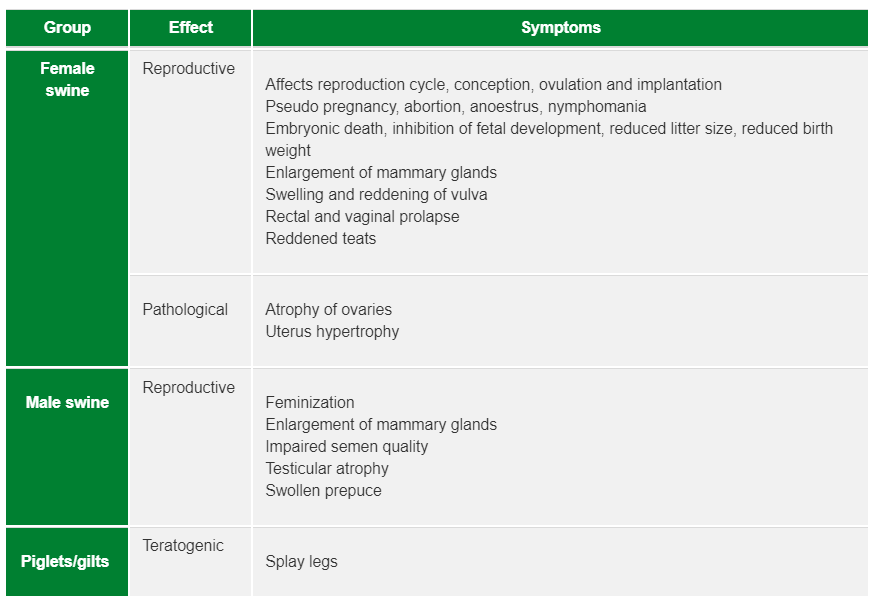
Deoxynivalenol
If DON is present in feedstuffs, it compromises feed intake and may result in vomiting (Diekman and Green, 1992). In addition, DON inhibits protein synthesis and alters the immune system response. DON causes reproductive issues by targeting oocyte and embryo development (Pestka et al., 2004; Alm et al., 2006).
The effects of DON and its relationship to reproduction in pigs have a more indirect effect (Figure 3). Feed intake reduction results in lower nutrient availability and poses a threat to the metabolic pathways of the reproductive system. In addition, any potential dysfunction of vital organs with a key role in metabolism like the liver and spleen would have an adverse effect on health. Once health is compromised, metabolic priorities are changed and the requirements of the reproductive system fall down the priority list (Kanora and Maes, 2009).
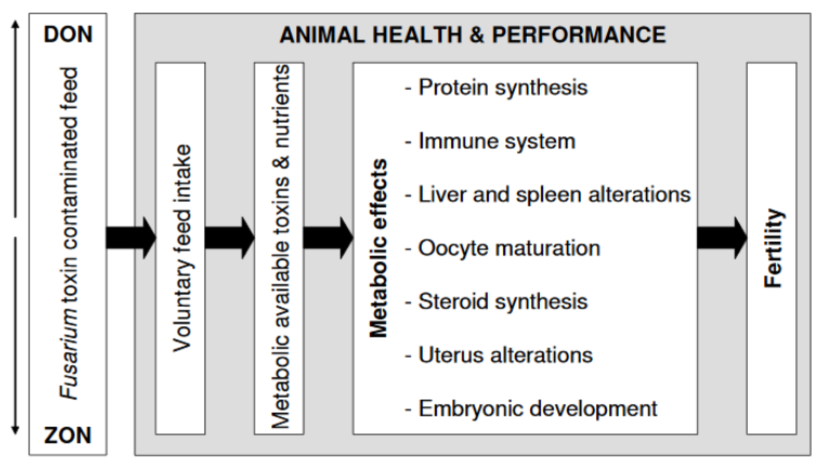
© Tiemann and Dänicke, 2007
Follicle development, oocyte maturation, and embryo development
In vitro studies in porcine oocytes have shown that the presence of ZEN, DON or a combination of DON with ZEN compromises the development of oocytes (Figure 4). The oocytes were not capable of maturation. This may compromise embryo survivability, pregnancy continuation and birth weight. In addition, DON had the most potent effect on embryo development after fertilisation, resulting in abnormal and reduced numbers of blastocysts.

© Malekinejad et al., 2007
In a recent trial contracted by BIOMIN at the University of Berlin, the reproductive performance of sows was evaluated in the presence of DON and ZEN during a long-term (three-cycle) exposure to Fusarium toxins. Sows were allocated to one of three different groups (Table 2).

The presence of mycotoxins impaired different reproductive performance parameters as shown in Figure 5. The most commonly used index for assessing reproductive performance is the number of weaned piglets per sow per year. Farrowing rate and wean to oestrus interval both affect this index. The presence of mycotoxins, especially ZEN, increased the returns to heat of inseminated sows and decreased the farrowing rate.
The drop in feed intake affected the body condition score of the sows at weaning and milk yield. Underweight sows need more days to come into oestrus after weaning. This decreases the number of farrowings per year, meaning there are fewer weaned piglets produced per sow per year. In addition, lower milk yields could compromise litter growth and weaning weights, resulting in lower weights at slaughter or more days in feed.
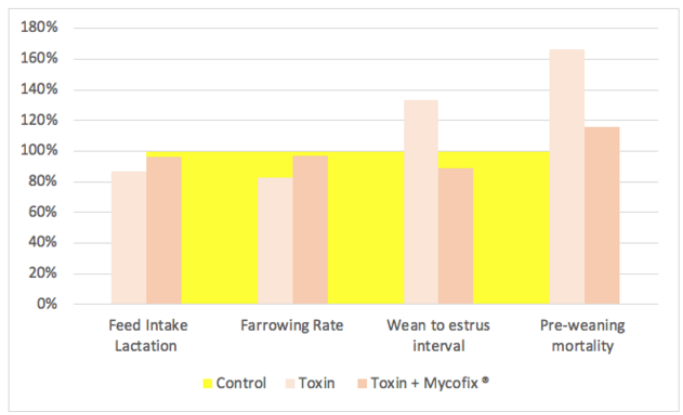
The presence of mycotoxins also compromised piglet quality (Figure 6). The percentage of underweight piglets (<1.2 kg) increased, implying that mycotoxins have a negative effect on embryo development and maternal nutrition. The negative effect on piglet quality accompanied with a depletion of milk yield may result in higher pre-weaning mortality and lower weaning weights.
However, a sound recovery was observed when Mycofix® Plus was applied.
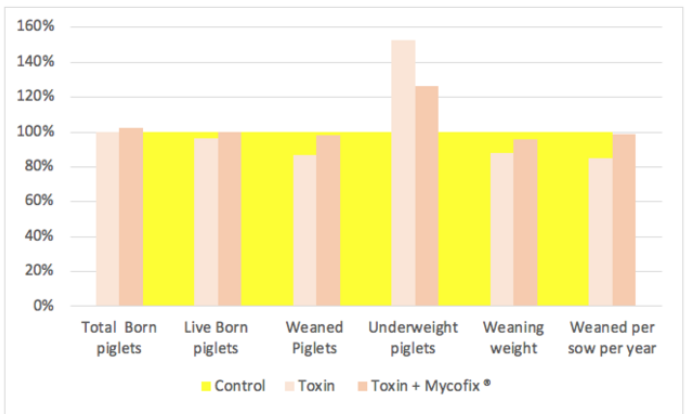
Multiple mycotoxins, many consequences
Mycotoxin co-contamination of raw materials is more common than single contamination, as routinely reported in the BIOMIN Mycotoxin Survey. Each mycotoxin acts in a specific manner, affecting multiple tissues, organs and functions. When combined, these challenges build a puzzle of different clinical or subclinical symptoms, often not linked with the direct known effects of mycotoxin contamination in animals.






